Welcome to our free classical music site

Do you write about classical music? Are you a blogger? Want to team up with Classical Connect? Send us a message, let's talk!

Do you write about classical music? Are you a blogger? Want to team up with Classical Connect? Send us a message, let's talk!
December 24, 2018. Christmas music of the Renaissance. Christmas is around the corner, and at this time of the year we usually try to kill two birds with one stone: celebrate this feast and commemorate some of the musicians whom we failed to mention during the previous 12 months.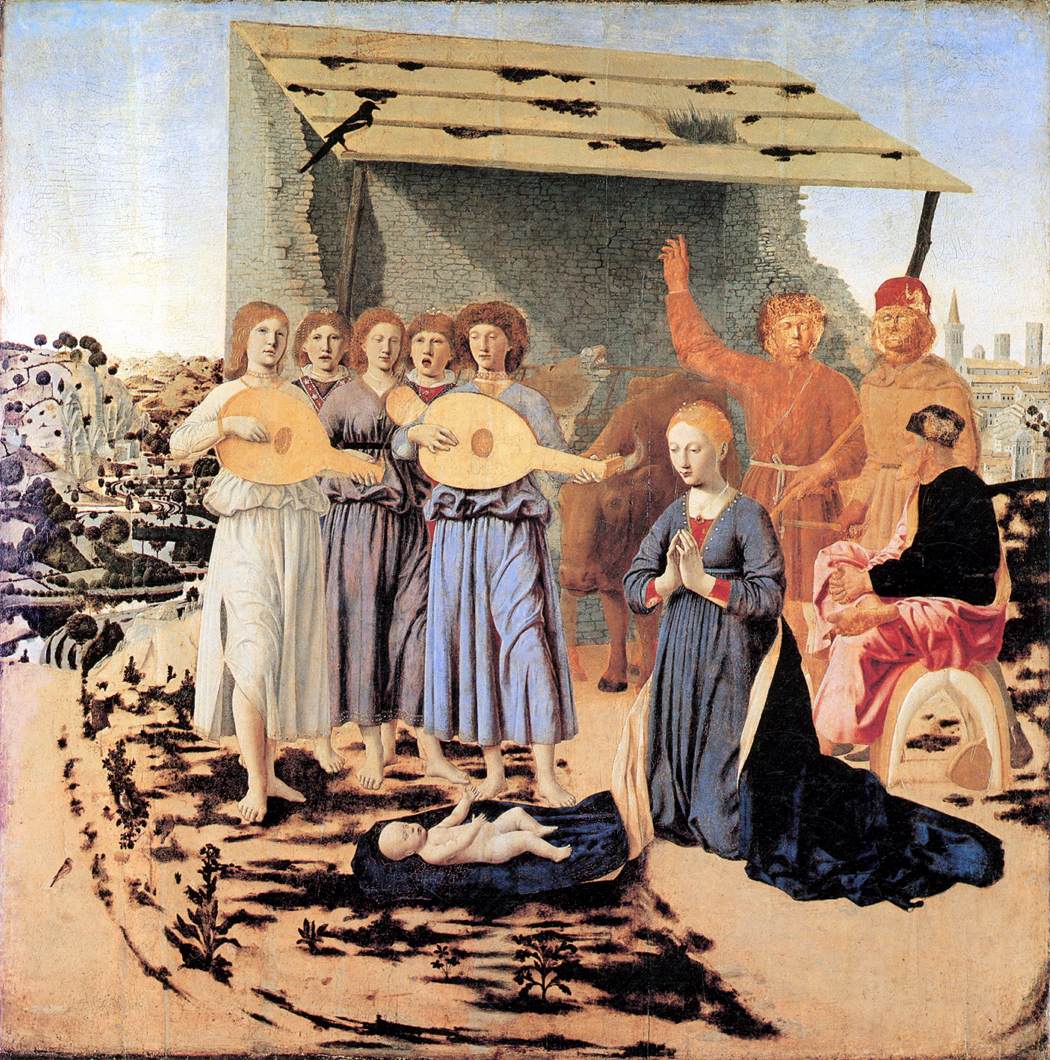 Very often those are the composers of the Renaissance, whose birthdays we don’t know. So here is to Christmas and to three great composers, Orlando di Lasso, Giovanni Pierluigi da Palestrina and Tomás Luis de Victoria.
Very often those are the composers of the Renaissance, whose birthdays we don’t know. So here is to Christmas and to three great composers, Orlando di Lasso, Giovanni Pierluigi da Palestrina and Tomás Luis de Victoria.
Giovanni Pierluigi da Palestrina, whose name derives from the name of a small town near Rome, was born in Palestrina sometime between February 3rd of 1525 and Feb 2nd of 1526. Palestrina moved to Rome in 1551 when Pope Julius III appointed him maestro di cappella at the Cappella Giulia, the second (after Cappella Sistina) most important choir of the Vatican. We should remember that prior to Palestrina, the music world of Rome was dominated by the Flemish-French and Spanish composers: Guillaume Dufay, Josquin des Prez, Cristóbal de Morales and their followers. Palestrina was the first important composer to be born in Italy and the first one to gain European fame. After working for several years for the Pope, he became the maestro di cappella of San Giovanni in Laterano, the cathedral church of Rome (the Lateran Basilica is the seat of the Pope, not St. Peter’s Basilica, as is often assumed). From 1561 to 1566 he served mostly at Santa Maria Maggiore, another major Roman church; in 1571 he returned to the Vatican, again in charge of the Cappella Giulia, and stayed there for the rest of his life (he died in Rome on Feb 2nd of 1594). It was during that period, around 1575, that he wrote a motet Hodie Christus natus est (Today Christ is born); he also wrote a mass by the same name, with the Kyrie section based on the motet. Here it is, performed by Harry Christophers’ ensemble The Sixteen.
Orlando di Lasso (or Orlande de Lassus) was born in 1530 or 1532 in the town of Mons in the County of Hainaut in what is now Belgium. He moved to Italy with Ferrante Gonzaga, a condottiero who was then serving the Holy Roman Emperor Charles V. After serving at several courts, Orlando moved to Rome, where, in 1553, he became maestro di cappella at San Giovanni in Laterano, a position eventually assumed by Palestrina. He didn’t stay in Rome for long; after traveling to several European countries he settled in Munich at the court of Albrecht V, Duke of Bavaria, and stayed there for the rest of his life. He died in Munich on June 14th of 1594, the same years a Palestrina. Orlando was enormously productive, writing 60 masses, 530 motets and much of secular music. One of his Christmas motets is Omnes de Saba (All of Sheba, bringing gold and frankincense). It was written in 1590. Here is it performed by the Choeur de chambre de Namur and Ricercar Consort under the direction of Peter Phillips.
The third composer, Tomás Luis de Victoria, was the youngest of the three: he was born around 1548 in the town of Sanchidrián near Ávila in Castile. He went to Rome in 1565; he most likely knew and might have studied with Palestrina. In 1573, Victoria was appointed Maestro di Capella at the Collegio Germanico and two years later – at Sant'Apollinare alle Terme, the church of the Collegio. Victoria returned to Spain in 1587 but went to Rome in 1594 to attend Palestrina’s funeral. Here, from 1572, is Victoria’s motet "O magnum mysterium,” (twenty years later he would use it to compose a mass “O magnum mysterium”). The motet was written for the Matins service of Christmas. It’s performed by Oxford Camerata, Jeremy Summerly conducting. Merry Christmas!Permalink
December 17, 2018. Les trois francophones. Last week we celebrated Beethoven’s birthday and promised to write later about three composers, who were also born that week. The three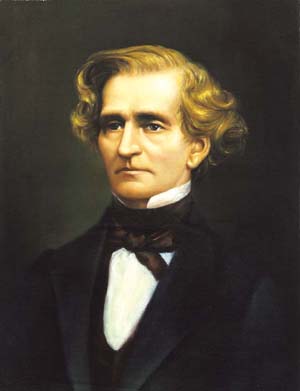 we’re referring to are Hector Berlioz, César Franck, and Olivier Messiaen. Two of them, Berlioz and Messaien, were French by birth; Franck was born in Liege, which is now in Belgium, but spent most of his adult life in Paris and eventually took French citizenship. Hector Berlioz was born on December 11th of 1803 in La Côte-Saint-André, a small town half way between Lyon and Grenoble. Berlioz is a unique figure in the history of European music. A Romantic composer, he didn’t have any musical predecessors, either in France or anywhere else, and didn’t leave any followers. During his lifetime, he wasn’t acknowledged as a musical talent in France and ended up mostly conducting (he was much better received in Germany and England). He wrote three operas: the first one, Benvenuto Cellini, had a terrible reception; his second, Les Troyens, was so long that it was never performed in France during his life; the third, Béatrice et Bénédict, was premiered in Germany and continued playing there for years, the first staging in Paris dates from 1890 – by then Berlioz had been dead for 21 years. These days Berlioz is recognized as one of the greatest composers of the 19th century. His symphonic masterpieces were acknowledged a long time ago, but even his operas, especially the astounding Les Troyens, are staged more often, despite all technical difficulties. Here’s the Overture to Berlioz’s Benvenuto Cellini, composed in 1858. Colin Davis conducts the BBC Symphony Orchestra.
we’re referring to are Hector Berlioz, César Franck, and Olivier Messiaen. Two of them, Berlioz and Messaien, were French by birth; Franck was born in Liege, which is now in Belgium, but spent most of his adult life in Paris and eventually took French citizenship. Hector Berlioz was born on December 11th of 1803 in La Côte-Saint-André, a small town half way between Lyon and Grenoble. Berlioz is a unique figure in the history of European music. A Romantic composer, he didn’t have any musical predecessors, either in France or anywhere else, and didn’t leave any followers. During his lifetime, he wasn’t acknowledged as a musical talent in France and ended up mostly conducting (he was much better received in Germany and England). He wrote three operas: the first one, Benvenuto Cellini, had a terrible reception; his second, Les Troyens, was so long that it was never performed in France during his life; the third, Béatrice et Bénédict, was premiered in Germany and continued playing there for years, the first staging in Paris dates from 1890 – by then Berlioz had been dead for 21 years. These days Berlioz is recognized as one of the greatest composers of the 19th century. His symphonic masterpieces were acknowledged a long time ago, but even his operas, especially the astounding Les Troyens, are staged more often, despite all technical difficulties. Here’s the Overture to Berlioz’s Benvenuto Cellini, composed in 1858. Colin Davis conducts the BBC Symphony Orchestra.
César Franck was born December 10th of 1822. He studied at the Royal Conservatory of Liège and later went to the Paris Conservatory, where he studied the organ and composition. He became a fine organist and was hired as the organist at the newly-built St. Clotilde church in the 7th arrondissement, with a great organ by Cavaillé-Coll. Franck played there from 1858 till his death in 1890. While he composed most of his adult life, it was only after he became established as the professor at the Paris Conservatory in 1872 that he could pursue composition seriously. Probably his best-known work is the Violin Sonata, composed in 1886, when Franck was 68. It’s one of the most popular pieces in the violin repertoire with literally hundreds of available recordings. Here’s one of them, made in 1968 by David Oistrakh and Sviatoslav Richter.
Olivier Messiaen, born on December 10th of 1908, 110 years ago, was one of the most important composers of the 20th century. We’ve written about him many times, for example here and here, but he clearly deserves another full entry, which we’ll try to do next year. Vingt Regards sur l'enfant-Jésus is one of Messiaen best (and best known) pieces for the piano. It is a long suite consisting of 20 pieces (the performance usually takes about two hours). We already have a number of excerpts in the library; here are two more, no. 3, L'échange, and no. 4, Regard de la Vierge. Both are played by Pierre-Laurent Aimard. Permalink
December 10, 2018. Beethoven. This second week of December almost always presents us with problems, and this is no exception. Early in the week we have three French (or, rather, French-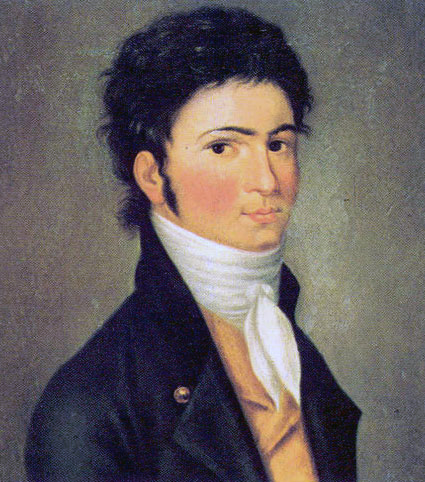 speaking) composers, and then, closer to the end, is Beethoven. We’ll write about César Franck, Hector Berlioz and Olivier Messiaen next week, as we cannot really skip over Beеthoven’s anniversary. Ludwig van Beethoven was born, we assume, on December 16th of 1770. Considering the time and place (the second half of the 18th century and Bonn, a small but important city, the seat of the Archdiocese of Cologne), it is strange that we don’t have a record of his birth; we only know that he was baptized on the 17th, which was usually done the next day after the birth of a child We’ve followed Beethoven’s life by his piano sonatas, an arbitrary choice but one that helps us concentrate on different periods of his life. Last year we stopped at his Sonata no. 10, Op. 14, written in 1798-1799. Sonata no. 11 was composed in 1800 and carries the opus number 22. Between these sonatas, Beethoven wrote six (!) string quartets, Piano concerto no. 1, published the Piano concerto no. 2, which was composed some five years earlier, and the First symphony. This incredibly productive period was not easy. On the one hand, by 1800 Beethoven became well established in Vienna, roundly acknowledged as the most talented composer since Mozart and Haydn; he had wealthy patrons, among them Prince Karl Alois Lichnowsky, a Chamberlain at the Imperial court and the former patron of Mozart, and Prince Lobkowitz, a major patron of Haydn. On the other hand, he was already developing severe hearing problems. It appears that the first episode happened as early as 1798, when Beethoven temporarily lost his hearing. Even after he recovered, he couldn’t get rid of the ringing in his ears, and his hearing was slowing declining.
speaking) composers, and then, closer to the end, is Beethoven. We’ll write about César Franck, Hector Berlioz and Olivier Messiaen next week, as we cannot really skip over Beеthoven’s anniversary. Ludwig van Beethoven was born, we assume, on December 16th of 1770. Considering the time and place (the second half of the 18th century and Bonn, a small but important city, the seat of the Archdiocese of Cologne), it is strange that we don’t have a record of his birth; we only know that he was baptized on the 17th, which was usually done the next day after the birth of a child We’ve followed Beethoven’s life by his piano sonatas, an arbitrary choice but one that helps us concentrate on different periods of his life. Last year we stopped at his Sonata no. 10, Op. 14, written in 1798-1799. Sonata no. 11 was composed in 1800 and carries the opus number 22. Between these sonatas, Beethoven wrote six (!) string quartets, Piano concerto no. 1, published the Piano concerto no. 2, which was composed some five years earlier, and the First symphony. This incredibly productive period was not easy. On the one hand, by 1800 Beethoven became well established in Vienna, roundly acknowledged as the most talented composer since Mozart and Haydn; he had wealthy patrons, among them Prince Karl Alois Lichnowsky, a Chamberlain at the Imperial court and the former patron of Mozart, and Prince Lobkowitz, a major patron of Haydn. On the other hand, he was already developing severe hearing problems. It appears that the first episode happened as early as 1798, when Beethoven temporarily lost his hearing. Even after he recovered, he couldn’t get rid of the ringing in his ears, and his hearing was slowing declining.
Beethoven was very proud of his Piano Sonata no. 11, op. 22, considering it his best up to that point, even if these day’s it’s not performed as often as some other piano sonatas, even from the same period. It’s a “grand” sonata, meaning that is has four, rather than three, movements: Allegro, Adagio, Menuetto, and Rondo: Alegretto. No. 11 is also the last of Beethoven’s classical sonatas, written in the style previously developed by Haydn and Mozart. Beethoven dedicated it to Count Johann Georg von Browne, a Russian officer of Irish descent, who moved to Vienna in 1794 and was one of Beethoven’s early patrons. The sonata is played here by Wilhelm Kempff, one of the greatest German pianists of the 20th century. This recording was made in 1965, when Kempff was 70.
Later in 1800, Beethoven started working on the next piano sonata, no. 12, which received opus number 26: in the interim, Beethoven composed two violin sonatas, one of which, no. 5, “Spring,” is a masterpiece, and a Serenade for Flute, Violin and Viola. Piano sonata no. 12 also has four movements and, unusually for a classical sonata, starts with an Andante, a slow movement representing a theme and variations. The theme is strikingly similar to the one Schubert used 27 years later in his Impromptu No. 2 in E-flat major. One wonders if it was an explicit homage or a subconscious borrowing. The third movement Maestoso andante, subtitled Marcia funebre sulla morte d'un eroe is a poignant funeral march. The sonata is performed by another great interpreter of the music of Beethoven, American pianist Richard Goode.Permalink
December 3, 2018. Mieczysław Weinberg. The Polish-Jewish-Soviet composer Mieczysław Weinberg is known by many names: his first name is sometimes spelled Moisey, his last name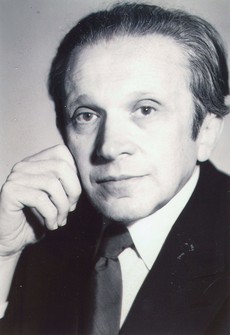 Vainberg, Vajnberg or Vaynberg. The problem is that, no matter how his name is spelled, the public doesn’t know his music. It’s a pity, as he deserves better. He was born Mojsze Wajnberg on December 9th of 1919 into a Jewish family in Warsaw. His father wrote music for Yiddish theaters. His mother was an actress in the same theaters. Mojsze (or Mieczysław in Polish) studied piano at the Warsaw Conservatory, graduating in 1939. On September of that year the Nazis entered Poland starting WWII and Weinberg fled to the Soviet Union. It was often the case at the time that Jewish families sent their older sons away first, hoping to join them later. Unfortunately, his parents and younger sister never made it out of Poland and eventually perished in a concentration camp. Weinberg settled in Minsk and went to the local Conservatory, where he studied composition. In 1941 Germany attacked the Soviet Union; the Minsk Conservatory was evacuated to Central Asia and Weinberg found himself in Tashkent. There, he met and eventually married Natalia Vovsi, daughter of the famous Yiddish actor and director Solomon Mikhoels (Mikhoels was his stage name, he was born Shloyme Vovsi). In 1943 Weinberg sent the score of his First Symphony to Dmitry Shostakovich. Shostakovich was impressed and arranged for Weinberg to be invited to Moscow; they soon became good friends. In January of 1948 his father-in-law, Solomon Mikhoels, one of the most prominent Jews of the Soviet Union, the chairman of the Jewish Anti-Fascist Committee who traveled the world encouraging support for the Soviet Union, was assassinated on Stalin’s orders. The murder was covered up as a road accident. At the time of Stalin’s campaign against “cosmopolitanism” (read anti-Jewish, antisemitic campaign) that followed, all prominent Jews were at risk. Weinberg was no exception: in February of 1953 he was arrested as a “Jewish bourgeois nationalist” and sent to the Gulag. Shostakovich, who wasn’t known for his civic courage, sent a letter to Lavrentiy Beria pleading his friend’s innocence (it didn’t help). Weinberg and many other Jews were saved by Stalin’s sudden death in March of 1953. Weinberg was allowed to return to Moscow. His family found a place not far from Shostakovich’s apartment; they visited each other often. Weinberg continued composing; his work, championed by Shostakovich, was also endorsed by several prominent performers and conductors, among them Emil Gilels, Leonid Kogan, Mstislav Rostropovich, Rudolph Barshai and Kirill Kondrashin. Weinberg died in Moscow on February 26th of 1996; shortly before death he converted to Orthodox Christianity.
Vainberg, Vajnberg or Vaynberg. The problem is that, no matter how his name is spelled, the public doesn’t know his music. It’s a pity, as he deserves better. He was born Mojsze Wajnberg on December 9th of 1919 into a Jewish family in Warsaw. His father wrote music for Yiddish theaters. His mother was an actress in the same theaters. Mojsze (or Mieczysław in Polish) studied piano at the Warsaw Conservatory, graduating in 1939. On September of that year the Nazis entered Poland starting WWII and Weinberg fled to the Soviet Union. It was often the case at the time that Jewish families sent their older sons away first, hoping to join them later. Unfortunately, his parents and younger sister never made it out of Poland and eventually perished in a concentration camp. Weinberg settled in Minsk and went to the local Conservatory, where he studied composition. In 1941 Germany attacked the Soviet Union; the Minsk Conservatory was evacuated to Central Asia and Weinberg found himself in Tashkent. There, he met and eventually married Natalia Vovsi, daughter of the famous Yiddish actor and director Solomon Mikhoels (Mikhoels was his stage name, he was born Shloyme Vovsi). In 1943 Weinberg sent the score of his First Symphony to Dmitry Shostakovich. Shostakovich was impressed and arranged for Weinberg to be invited to Moscow; they soon became good friends. In January of 1948 his father-in-law, Solomon Mikhoels, one of the most prominent Jews of the Soviet Union, the chairman of the Jewish Anti-Fascist Committee who traveled the world encouraging support for the Soviet Union, was assassinated on Stalin’s orders. The murder was covered up as a road accident. At the time of Stalin’s campaign against “cosmopolitanism” (read anti-Jewish, antisemitic campaign) that followed, all prominent Jews were at risk. Weinberg was no exception: in February of 1953 he was arrested as a “Jewish bourgeois nationalist” and sent to the Gulag. Shostakovich, who wasn’t known for his civic courage, sent a letter to Lavrentiy Beria pleading his friend’s innocence (it didn’t help). Weinberg and many other Jews were saved by Stalin’s sudden death in March of 1953. Weinberg was allowed to return to Moscow. His family found a place not far from Shostakovich’s apartment; they visited each other often. Weinberg continued composing; his work, championed by Shostakovich, was also endorsed by several prominent performers and conductors, among them Emil Gilels, Leonid Kogan, Mstislav Rostropovich, Rudolph Barshai and Kirill Kondrashin. Weinberg died in Moscow on February 26th of 1996; shortly before death he converted to Orthodox Christianity.
Weinberg is sometimes dismissed as the “smaller Shostakovich.” It’s true that he borrowed some idioms from his great compatriot and in some pieces quoted him directly, but Weinberg was a talented original composer, a wonderful melodist also capable of sophisticated orchestration. He wrote seven operas; the best known, The Passenger, has been staged at the English National Opera, the Lyric Opera of Chicago and many other stages. He also wrote 22 symphonies and many chamber works. Here’s the second movement, Lento, from Weinberg’s Symphony no. 1, composed in 1942 in Tashkent, the one that so impressed Shostakovich. Gothenburg Symphony Orchestra is conducted by Thord Svedlund.Permalink
November 26, 2018. Lully, Donizetti, Callas. Jean-Baptiste Lully was born this week, on November 28th of 1632. He’s the first of the great French Baroque composers – Couperin and Rameau followed, each a generation younger. When Lully was accepted at the court of Louis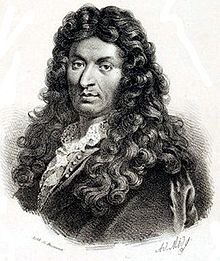 XIV, first as a dancer, then as composer, French music was in a temporary decline. The Italians were way ahead, developing the new Baroque style: Monteverdi, the “father” of the opera, was one of the very first to cross the line between Renaissance and Baroque; Girolamo Frescobaldi adapted the new style to his music for the clavier; Giacomo Carissimi, Tarquinio Merula and Salamone Rossi were among the early adopters. Francesco Cavalli and Antonio Cesti followed Monteverdi in the development of opera. There were many more – Italy was bursting with musical talent. The French just couldn’t compare – that’s till Lully, an Italian who took French citizenship once the King gave him the most important music position in the realm, that of the surintendant de la musique de la chambre du roi, the superintendent – the manager and organizer – of music in the King’s chambers. And at the court, Lully was really in charge of everything music-related. He had two composers working for him, supervised several ensembles, including the famous Twenty-Four Violins of the King, and other musicians. He also composed. In 1664 he met Molière, with whom he created several comédies-ballets. Most of them were premiered at the court and then played in Paris theaters. Lully even became known in Italy: the Grand Duke of Tuscany asked him to write several dances in the “fashionable style.” All this work brought Lully a lot of money, and in 1670 be built himself a splendid house on the corner of rue Sainte-Anne and rue des Petits Champs (the house was so expensive that he still had to borrow 11,000 livres from Molière). The building still exists. Here’s a short Prelude to Psyché, a play by Molière. William Christie conducts Les Arts Florissants.
XIV, first as a dancer, then as composer, French music was in a temporary decline. The Italians were way ahead, developing the new Baroque style: Monteverdi, the “father” of the opera, was one of the very first to cross the line between Renaissance and Baroque; Girolamo Frescobaldi adapted the new style to his music for the clavier; Giacomo Carissimi, Tarquinio Merula and Salamone Rossi were among the early adopters. Francesco Cavalli and Antonio Cesti followed Monteverdi in the development of opera. There were many more – Italy was bursting with musical talent. The French just couldn’t compare – that’s till Lully, an Italian who took French citizenship once the King gave him the most important music position in the realm, that of the surintendant de la musique de la chambre du roi, the superintendent – the manager and organizer – of music in the King’s chambers. And at the court, Lully was really in charge of everything music-related. He had two composers working for him, supervised several ensembles, including the famous Twenty-Four Violins of the King, and other musicians. He also composed. In 1664 he met Molière, with whom he created several comédies-ballets. Most of them were premiered at the court and then played in Paris theaters. Lully even became known in Italy: the Grand Duke of Tuscany asked him to write several dances in the “fashionable style.” All this work brought Lully a lot of money, and in 1670 be built himself a splendid house on the corner of rue Sainte-Anne and rue des Petits Champs (the house was so expensive that he still had to borrow 11,000 livres from Molière). The building still exists. Here’s a short Prelude to Psyché, a play by Molière. William Christie conducts Les Arts Florissants.
Gaetano Donizetti was born on November 29th of 1797 in Bergamo. He studied in a local school established by a German opera composer Simon Mayr, who moved to Bergamo and was appointed the maestro di cappella at the Cathedral of Bergamo. Gaetano was one of Mayr’s favorite pupils, and Mayr even secured a scholarship for him to study in Bologna. In 1821 Donizetti, a fledgling composer, moved to Rome. There he wrote hist first successful opera, Zoraida. A year later he moved to Naples and stayed there for 16 years. It was during that period that he wrote most of his masterpieces. The first was Anna Bolena, written in 1830. It premiered in Milan, in Teatro Carcano; the success was overwhelming. Giuditta Pasta sung the title role. Pasta, a mezzo who sung soprano roles, one of the greatest singers of her time (Bellini wrote the role of Norma with her in mind). Nowadays, musicologists compare her to Maria Callas. It just so happens that Maria Callas’s birthday is also this week! She was born on December 2nd of 1923 in New York to Greek parents. Here’s an outstanding performance by Callas in the Mad Scene from Anna Bolena. In the 20th century Donizetti’s masterpiece was almost forgotten, partly because the main role is so demanding; Pasta brought Anna Bolena to life, Callas’s performance at La Scala in 1957 helped to revive it. In this studio recording, made one year later in London, Nicola Rescigno is conducting the Philharmonia Orchestra. We can only guess if Giuditta Pasta was as good.Permalink
November 19, 2018. Three 20th century composers. Benjamin Britten was born on November 22nd of 1913 in Lowestoft, the easternmost town in the UK. The greatest British composer of the 20th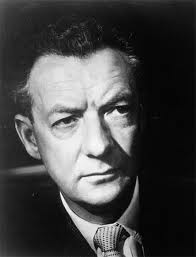 century, he was also the leading opera composer of his time, having written such classics as Peter Grimes, Billy Budd, and The Turn of the Screw. Britten received his first musical lessons from his mother; he then continued taking lessons at Lowestoft and later – at the Royal College of Music in London. In 1934, while Britten was still studying at the Royal College, he had his first composition, the Sinfonietta, Op. 1, performed in public (by then he had written many pieces he would later dismiss as juvenilia). After graduating, he worked for the BBC movie unit and wrote music for theater and radio. London was (and is) one of Europe’s music centers; Britten went to many concerts and fell in love with the music of Mahler (Das Lied von der Erde in particular); Berg (especially Wozzeck) and Stravinsky also left a big impression (he even wanted to study with Berg but that never worked out). In 1937 Britten met the young tenor, Peter Pears, who became a personal and professional partner for the rest of his life (Pears outlived Britten by 10 years). In April of 1939 Britten and Pierce sailed to America; both were pacifists and felt uncomfortable in Europe, also several of their friends, like W. H. Auden and Christopher Isherwood, had moved to the US. As WWII began, they decided to return to Britain, but the British Embassy persuaded them to stay on as “cultural ambassadors.” Still, in 1942 they returned, and Britten started working on the opera Peter Grimes, which he completed in 1944. It premiered in 1945 at Sadler's Wells Opera, now English National Opera, London’s second (after the Covent Garden) opera house. Here are Four Sea Interludes from "Peter Grimes", with Leonard Bernstein conducting the Boston Symphony Orchestra. Peter Grimes was both a critical and popular success, and it established Britten as a foremost British composer. This is Bernstein’s last recording, made live in Tangelwood on August 19th of 1990. Bernstein died in New York a month and a half later. As for Britten, we’ll have to return to the second half of his life – his operas, songs and symphonic works – at another time. For now, here’s an aria from Peter Grimes,Embroidery in childhood. Ellen is wonderfully sung by the soprano Renée Fleming, Balstrode is the baritone Jonathan Summers. London Symphony Orchestra is conducted by Sir Georg Solti.
century, he was also the leading opera composer of his time, having written such classics as Peter Grimes, Billy Budd, and The Turn of the Screw. Britten received his first musical lessons from his mother; he then continued taking lessons at Lowestoft and later – at the Royal College of Music in London. In 1934, while Britten was still studying at the Royal College, he had his first composition, the Sinfonietta, Op. 1, performed in public (by then he had written many pieces he would later dismiss as juvenilia). After graduating, he worked for the BBC movie unit and wrote music for theater and radio. London was (and is) one of Europe’s music centers; Britten went to many concerts and fell in love with the music of Mahler (Das Lied von der Erde in particular); Berg (especially Wozzeck) and Stravinsky also left a big impression (he even wanted to study with Berg but that never worked out). In 1937 Britten met the young tenor, Peter Pears, who became a personal and professional partner for the rest of his life (Pears outlived Britten by 10 years). In April of 1939 Britten and Pierce sailed to America; both were pacifists and felt uncomfortable in Europe, also several of their friends, like W. H. Auden and Christopher Isherwood, had moved to the US. As WWII began, they decided to return to Britain, but the British Embassy persuaded them to stay on as “cultural ambassadors.” Still, in 1942 they returned, and Britten started working on the opera Peter Grimes, which he completed in 1944. It premiered in 1945 at Sadler's Wells Opera, now English National Opera, London’s second (after the Covent Garden) opera house. Here are Four Sea Interludes from "Peter Grimes", with Leonard Bernstein conducting the Boston Symphony Orchestra. Peter Grimes was both a critical and popular success, and it established Britten as a foremost British composer. This is Bernstein’s last recording, made live in Tangelwood on August 19th of 1990. Bernstein died in New York a month and a half later. As for Britten, we’ll have to return to the second half of his life – his operas, songs and symphonic works – at another time. For now, here’s an aria from Peter Grimes,Embroidery in childhood. Ellen is wonderfully sung by the soprano Renée Fleming, Balstrode is the baritone Jonathan Summers. London Symphony Orchestra is conducted by Sir Georg Solti.
Polish composer Krzysztof Penderecki was born 20 years after Britten, on November 23rd of 1933, but his music belongs to a very different era. It’s much more “avantgarde,” at least the music he wrote in the first half of his creative life. Penderecki has said that as a child he was very religious: “My family was very open. My grandfather was German and a Protestant. My father, a lawyer, was Greek-Catholic and played the violin. My mother was very religious and went to church twice a day. My grandmother was Armenian. So I was raised with three different faiths - that's why I am so open.” This probably explains Penderecki’s interest in religious themes: in 1958 he wrote Psalms of David for mixed choir, string instruments and percussions; in 1966 – The St Luke Passion; then a choral work Canticum Canticorum Salomonis in 1973 and a year later, the orchestral piece, The Dream of Jacob. Here’s the first movement of Part I of St. Luke Passion, "O Crux ave." Antoni Wit conducts the Warsaw National Philharmonic and Choir, Warsaw Boys Choir and the soloists.
Another very interesting 20th century composer, Alfred Schnittke was born on November 24th of 1934. We’ll have to write about him another time.Permalink